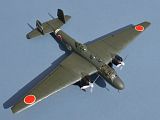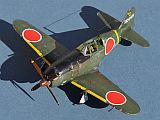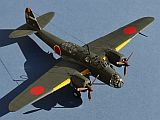Adversaries: WW2 Japanese.
![]()
Most of these aircraft, but not all, have tangled in some way (mostly unsuccessfully) with the Fleet Air Arm:
 Main Index
Main Index

Mitsubishi A6M2b Zero Reisen (Zero), 202 Kokutai IJN, Rabaul 1942.
Allied reporting name: “Zeke”
Airfix out the box link to build page
The carrier-
The A6M2b was the most numerous version, leading the 1941 attack at Pearl Harbor and against the British Eastern Fleet at Ceylon in April 1942. 202 Kokutai (formerly Genzan) were largely obliterated by the US Navy during the Guadalcanal campaign and the battles known as “the Great Marianas Turkey Shoot.
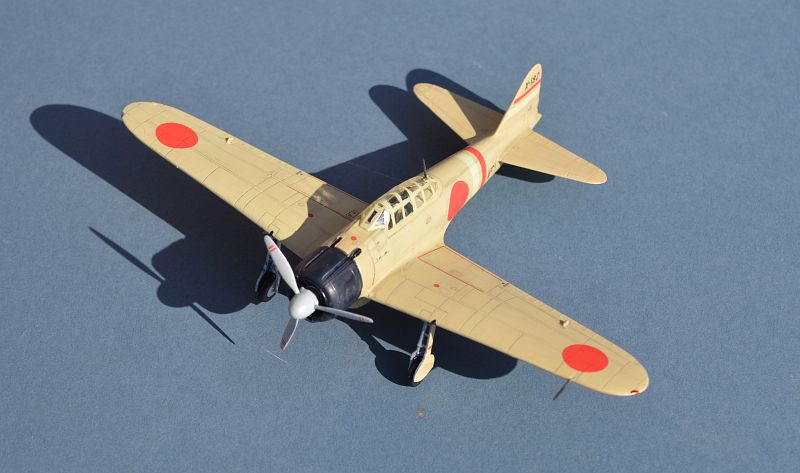
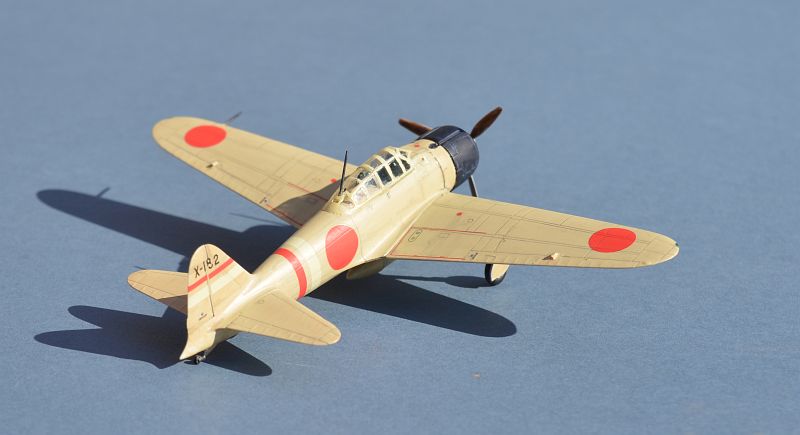
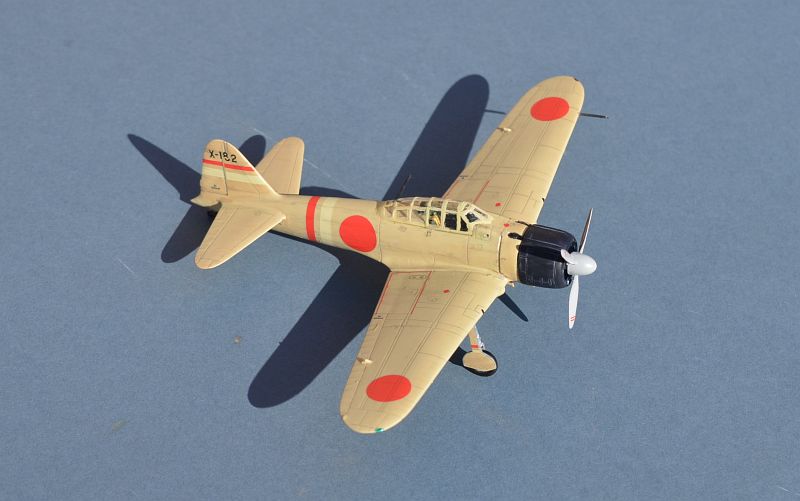
Mitsubishi A6M5c Zero Reisen (Zero), Motoyama Naval Air Base, Iwo Jima
Allied reporting name: “Zeke”
Hasegawa out the box
Later Zero variants featured four long-
This particular aircraft was part of the famous Genzan Kokutai operating from South Field Motoyama on the island of IwoJima. It may have been expended as a Kamikaze aircraft.
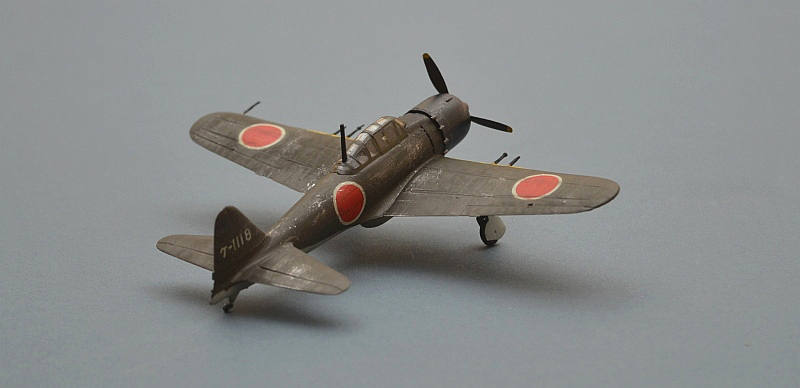
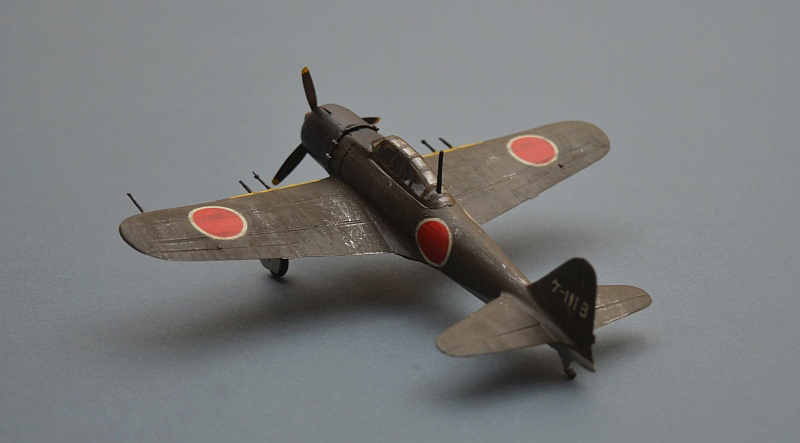
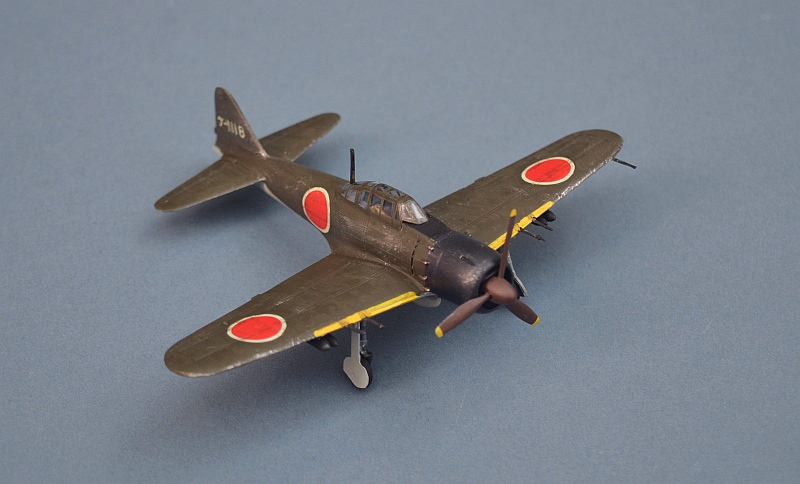
Aichi D3A1 Type 99 Carrier Bomber, IJN Carrier Akagi Air Group
Airfix out the box link to build page
The Val dive bomber entered service in 1939 and was the most important Japanese carrier based bomber aircraft of early WW2, playing a critical role in many of the IJN’s early victories, including Pearl Harbor, where it dealt a near fatal blow against the US Navy, the less successful Indian Ocean Raid, intended to repeat the Pearl Harbour success against the British Eastern Fleet in Ceylon, and in air raids on the Australian mainland at Darwin.
Often paired with B5N “Kate” torpedo aircraft, the "Val" sank more Allied ships during WW2 than any other Axis aircraft, including the RN carrier HMS HERMES, and USN Carriers USS Lexington, USS Hornet and USS Yorktown.
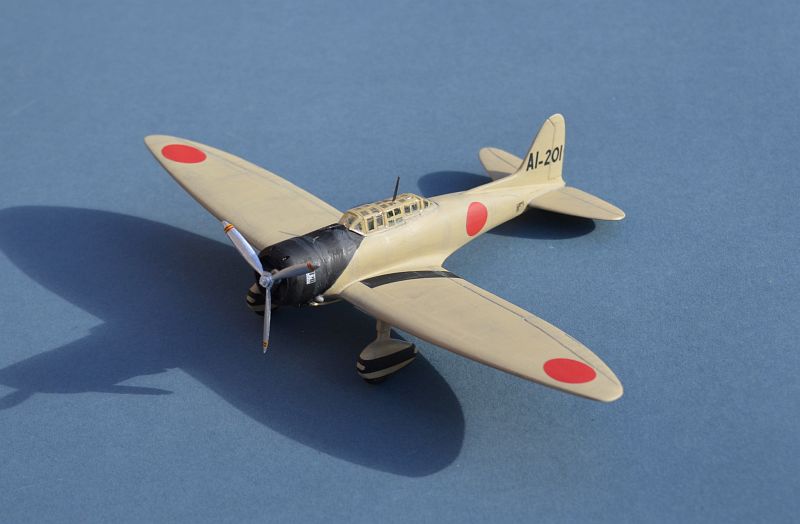
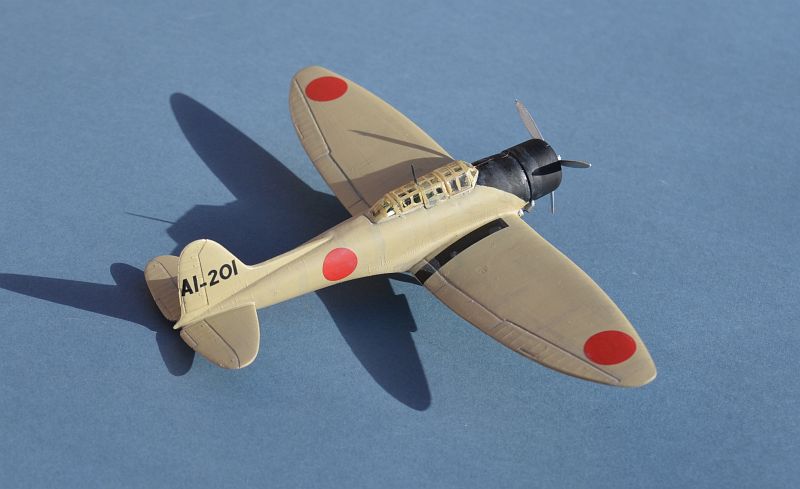
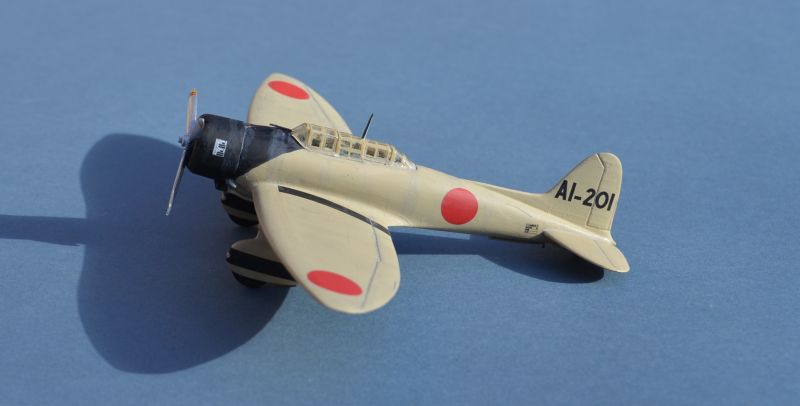
Nakajima B5N2 Kate, IJN Carrier Shokaku Air Group,
Allied Reporting name: “Kate”
Airfix out the box Link to Build page
The Kate was the main carrier attack aircraft at the start of WW2. Along with the Zero and the Val, it led the initial attacks on the US Navy and the Royal Navy. Capable of carrying air launched torpedoes or a good load of bombs, like most early Japanese aircraft, it was built for range, speed and agility at the cost of armour and other protection. As such, once the Japanese faced determined Allied opposition it proved to be vulnerable with a tendency to burst into flames when fired on.
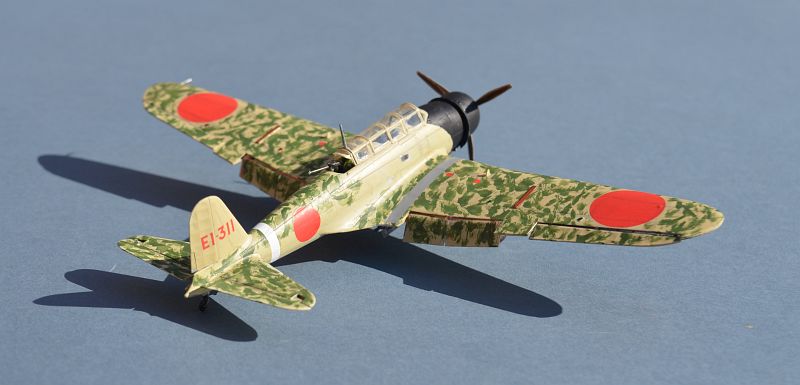
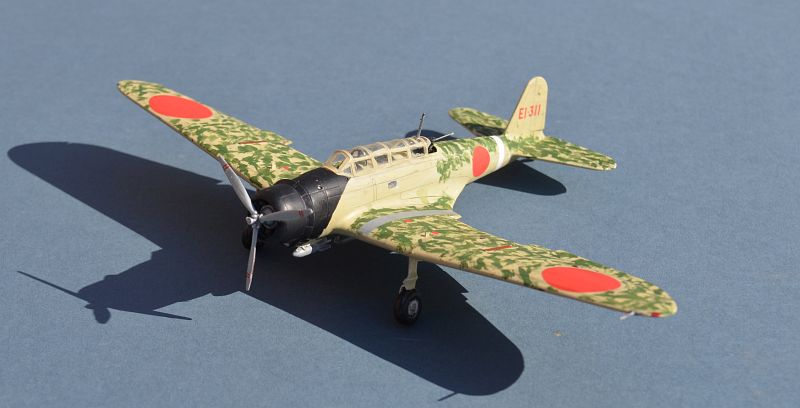
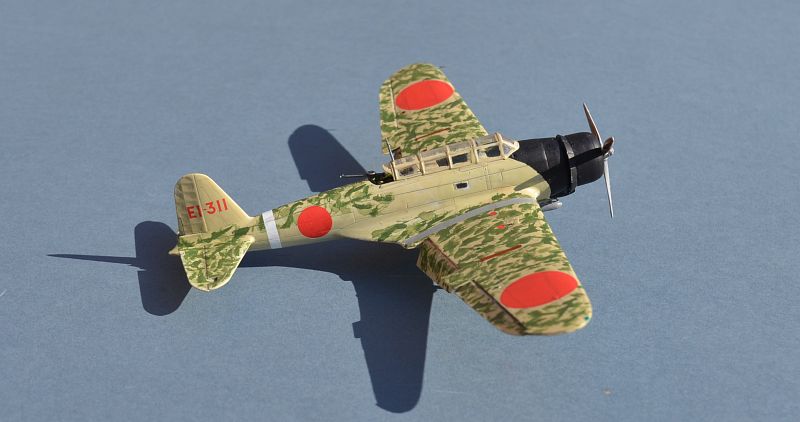
Yokosuka D4Y3 Suisei (Comet)
601st Kokutai Imperial Japanese Navy Yokosuka, 1945
Allied reporting name: “Judy”
Fujimi out the box Link to Build page
Lacking any equivalent of the Allies' powerful Merlin, Griffon, Wasp & Cyclone engines,
Imperial Japanese Navy designers concentrated on lightweight and aerodynamically
advanced designs to compensate. Asa replacement for the D3A1 Val, the D4Y Suisei
dive bomber exemplified this approach, building on a Heinkel concept (the He-
Unable to operate from the smaller IJN carriers due to their very high landing speed, operations by Judy dive bombers were seriously hampered by a lack of experienced aircrew after they were decimated by the USN and British Pacific Fleet. During the final year of the Pacific war, they were widely used as Kamikaze aircraft, stripped of equipment and armed with a single 800lb bomb.
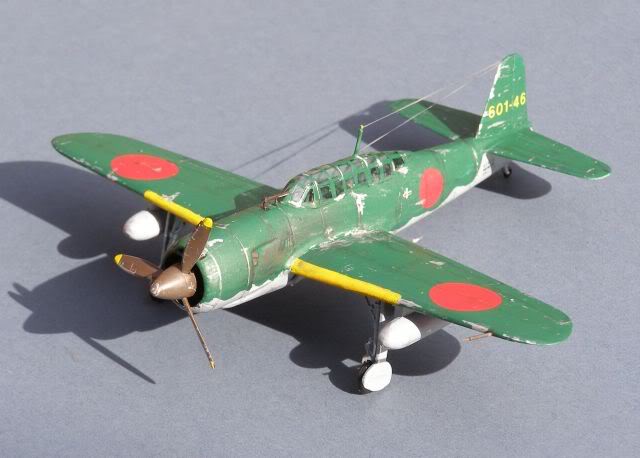
On 6 April 1945 a D4Y3 Judy struck HMS ILLUSTRIOUS' island in a suicide attack, before skidding into the sea where its bomb exploded. Damage to the hull was significant, although the ship was able to continue with flying operations. Nevertheless, with her top speed now severely limited, it marked the end of ILLUSTRIOUS' war and she was forced to returned to home waters, arriving at Rosyth Dockyard in June 1945 for extensive repairs that lasted for over a year.
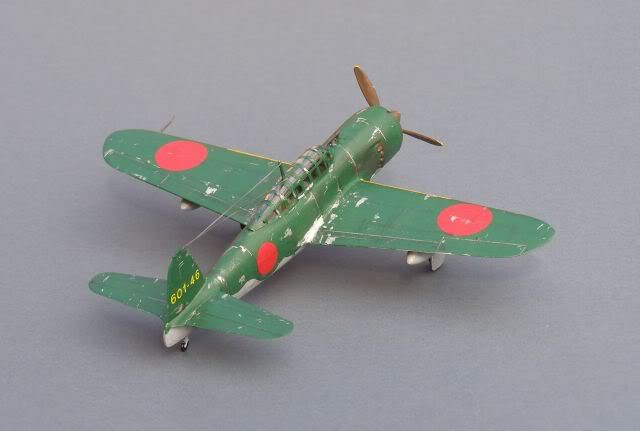
Attacks by Kamikaze (Divine Wind), or more correctly Tokubetsu Ko-
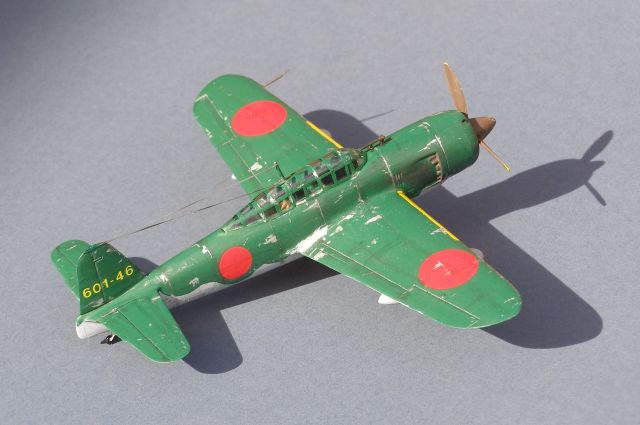
Mitsubishi G4M1 Type 1 Attacker Mk.11 -
Allied reporting name: “Betty”
Yokosuka MXY-
721st Kokutai, 708th Attack Sqn. Imperial Japanese Navy, Okinawa, June 1945
Hasegawa (out the box) link to build page
The Betty was a highly successful Japanese bomber design that remained in production throughout WW2. Very fast for its time, its early successes were helped by its ability to outrun most Allied fighter aircraft.
With the arrival of the Seafire, Corsair and Hellcat in theatre this advantage was soon lost and the Betty’s light construction and lack of armour began to take their toll. Despite frantic attempts to add simple rubber protection to its fuel tanks, It quickly gained a reputation for catching fire with the lightest of hits on the fuel carrying wings.
As the war in the Pacific drew to its climax, Bettys were used in such diverse roles as as troop transports and heavy escort fighters as well as carrying rocket powered Ohka suicide bombers to attack the Allied fleet.
The Betty’s final duty came as transport for the Japanese surrender delegation on
the first leg of their flight the Philippines to deliver the formal surrender documents.
The disarmed G4Ms were painted all-
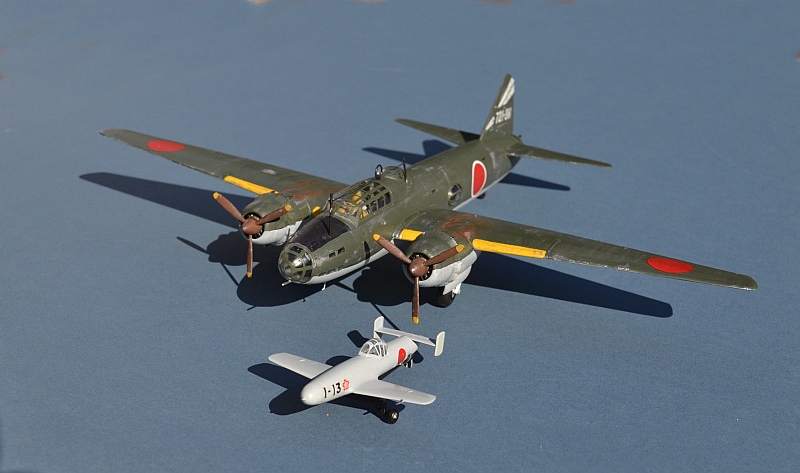
The Betty’s intended cargo was this Ohka (“Cherry Blossom”) rocket powered Kamikaze flying bomb. Carrying a 1.200kg warhead, it could achieve a top speed of over 570 Mph and would be dived into the decks of Allied warships . Over 750 were built and used mainly during the battles off Okinawa, where they proved of little value, with only a few successful hits on smaller ships, and no confirmed hits on any of the target capital ships or carriers. As with German attempts at radio controlled anti shipping missiles, the Ohka’s main weakness was the vulnerability of the heavily laden “Betty” carrying aircraft needed to get it with in range of its target.
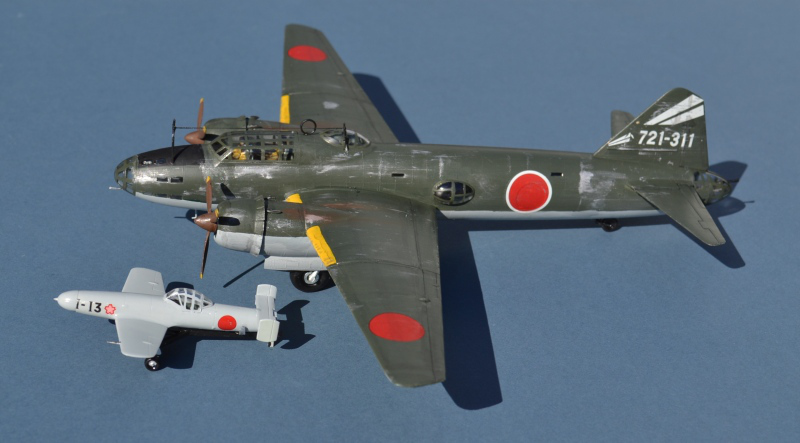
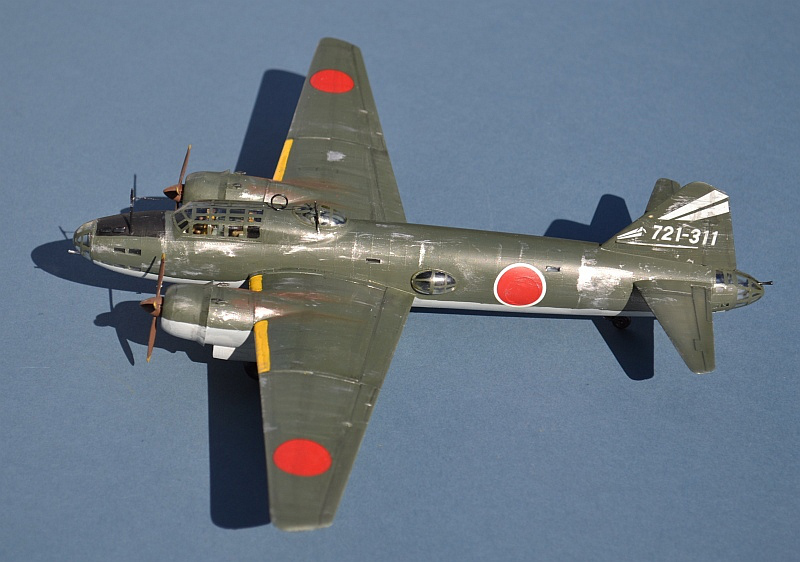
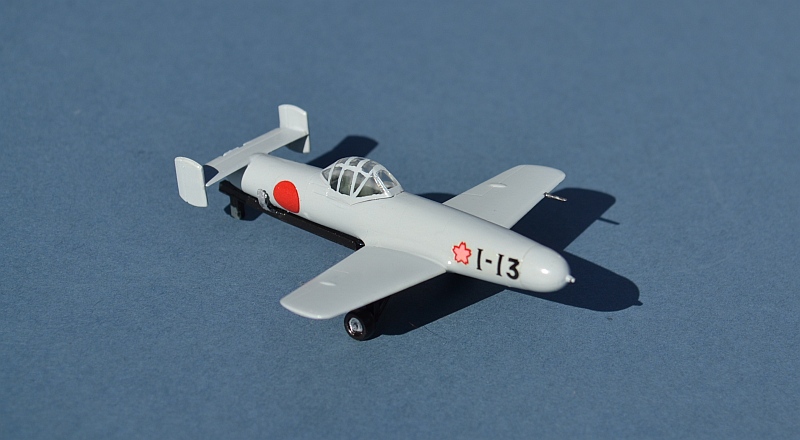
Kawanishi N1K2-
Allied reporting name: “George”
343rd Kokutai, 301st Squadron, Imperial Japanese Navy July 1945
Aircraft of Lt. Naoshi Kanno, IJN
Hasegawa (out the box) link to build page
The Shinden-
By early 1945, the IJN had already lost most of its most capable pilots and all of its aircraft carriers. Those remaining were gathered in elite units equipped with the latest equipment, including the 343rd Kokutai commanded by Captain Minoru Genda, architect of the Pearl Harbor attacks.
The 343rd was the main user of the “George”. Despite an impressive combat record and undoubted qualities of its pilots and aircraft, unit losses could no longer be replaced; with overwhelming losses, the 343rd was withdrawn from combat and finally disbanded on 14th August 1945.
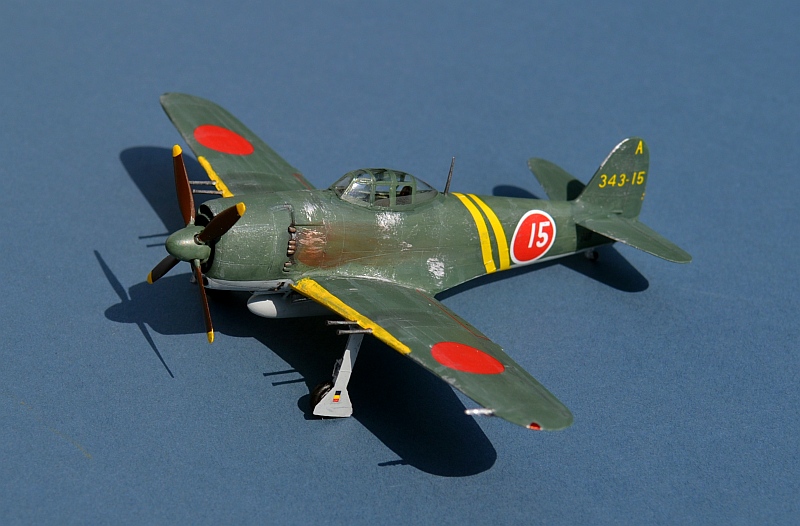
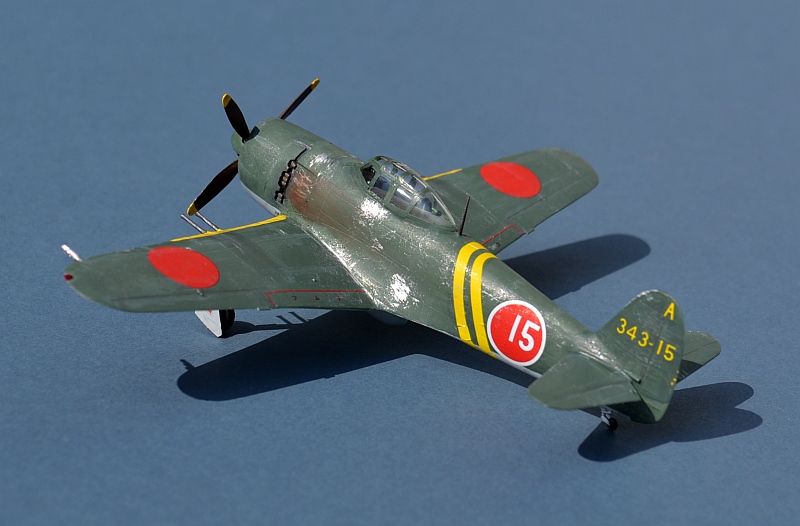
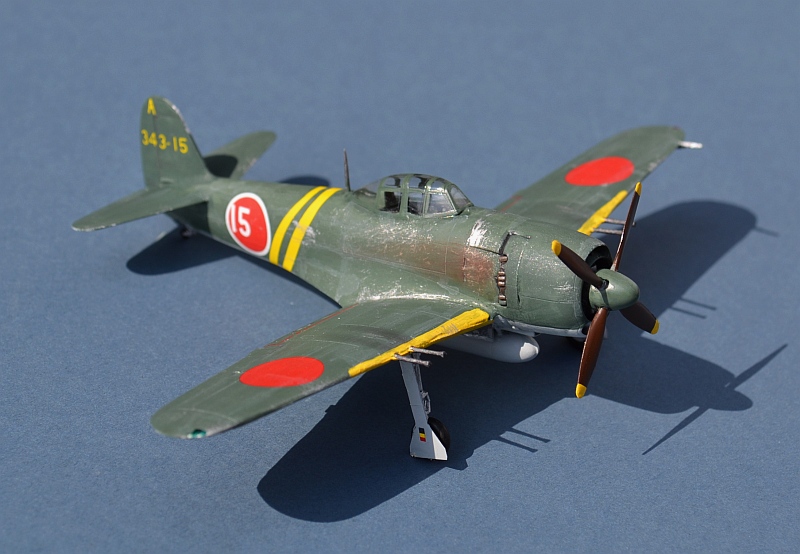
Nakajima C6N1 Saiun (Iridescent Cloud)
Allied reporting name: “Myrt”
Hikotai 11, Kokutai 762, Katori Air Base, Imperial Japanese Navy, January 1945
Sword (out the box) link to build page
Entering Service in September 1944, the Myrt was a very fast 3-
Over 460 Myrts were built, including night fighter versions armed with oblique mounted 30mm guns in place of the centrally seated observer.
On 15 Aug 1945, a Myrt that was shadowing the Allied Fleet became the last aircraft
to be shot down during WW2 (although there were several further engagements after
the official cease-
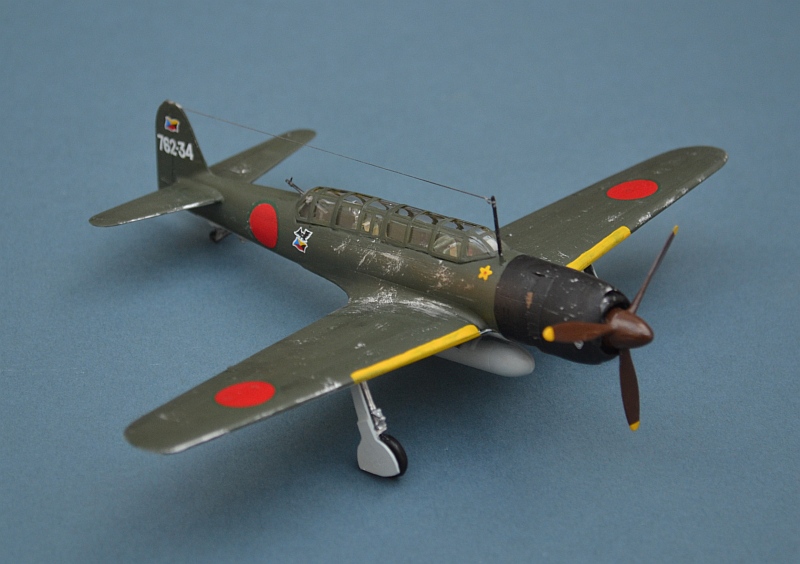
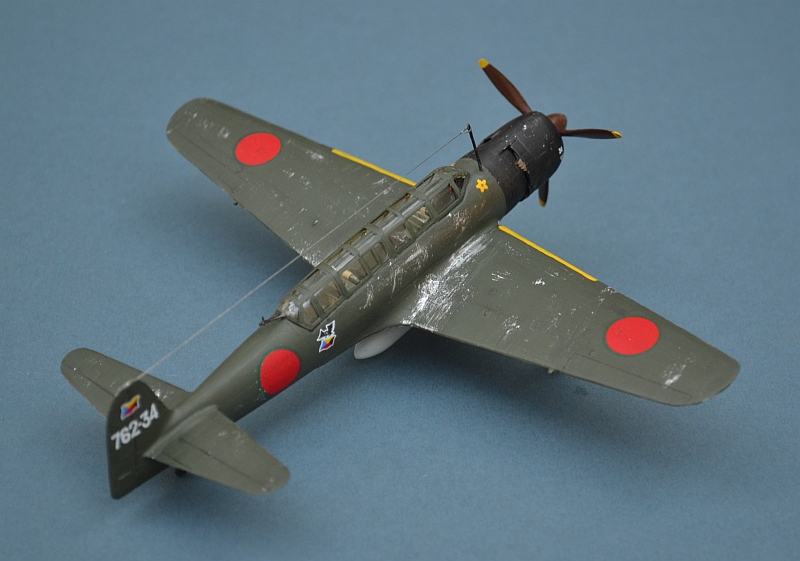
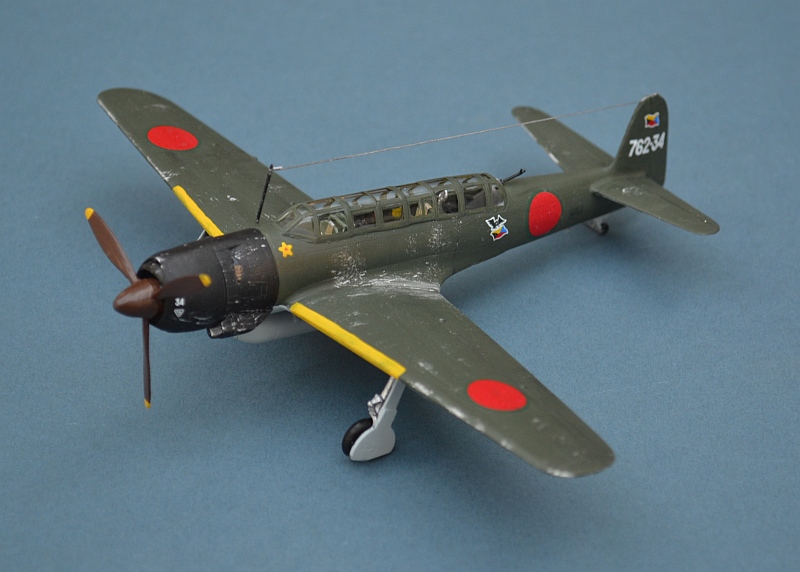
Nakajima Ki-
70th Army Fighter Squadron, Kashiwa Air Base, Tokyo, June 1945
Aircraft of Capt. Yosio Yoshida, IJAAF
Hasegawa (out the box)
The Shoki was developed as a high altitude interceptor with an emphasis on speed,
climbing and diving capabilities. Like many Japanese designs, it suffered from the
lack of strategic planning and co-
Entering service in 1942, it saw widespread combat defending the Sumatran oilfields
and then became a useful counter to the massed B-
In the final months of WW2, some aircraft were also used in suicide ramming attacks
against B-
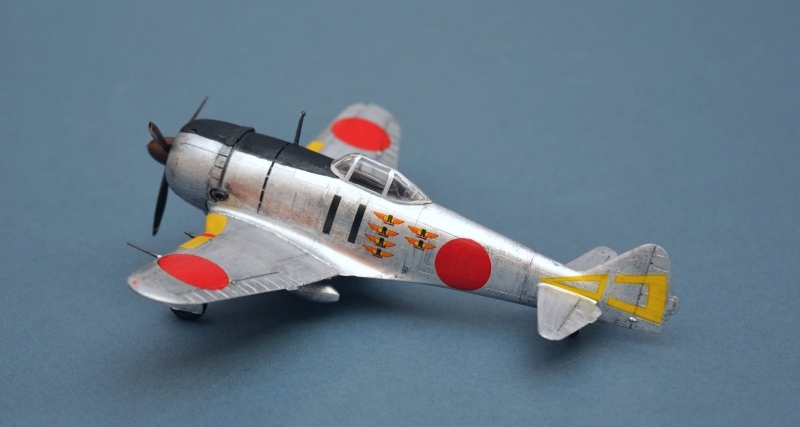
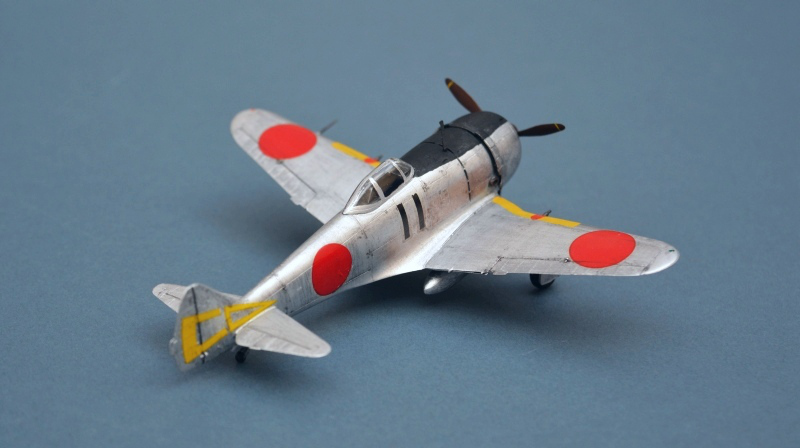
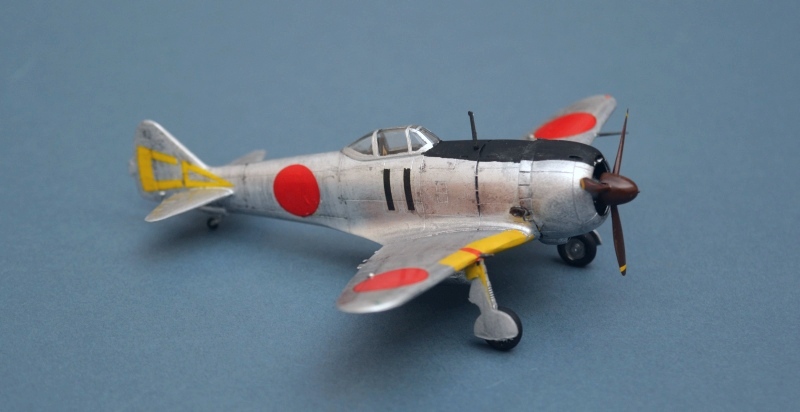
Mitsubishi G3M3 Type 96 Land-
Genzan Air Group, Imperial Japanese Navy, Saigon, 1941
Arii (out the box) link to build page
The Mitsubishi G3M was developed in the mid 1930s as a maritime attack aircraft. With a very long range of over 3,300 nautical miles at high speed (258mph), it was well ahead of contemporary European and US aircraft, coming as an unpleasant surprise when first encountered by the Allies in 1941, by which time it was already being replaced in Japanese Navy service.
With a full title of Mitsubishi G3M Type 96 Land-
Following service over China, where it conducted the first ever trans-
Nells later participated in the massed bombing raids on Darwin in northern Australia,
as part of Japanese preparations to invade. By the beginning of 1943, the Nell
was relegated to secondary duties, including bomber training and maritime patrol,
with some aircraft fitted out with early Japanese anti-
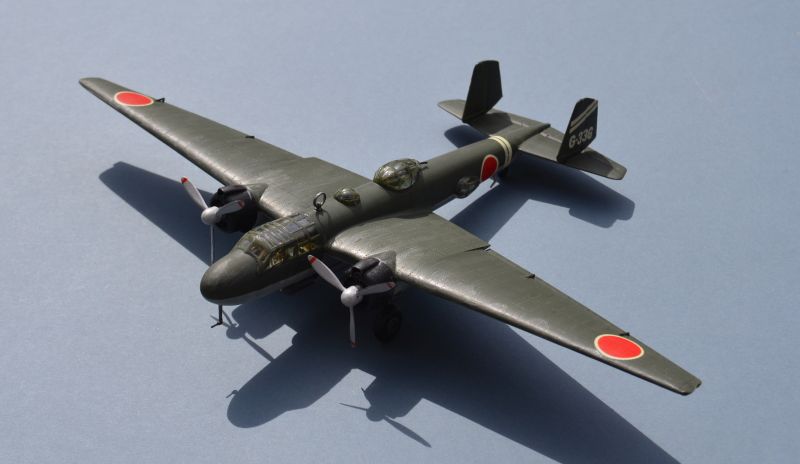
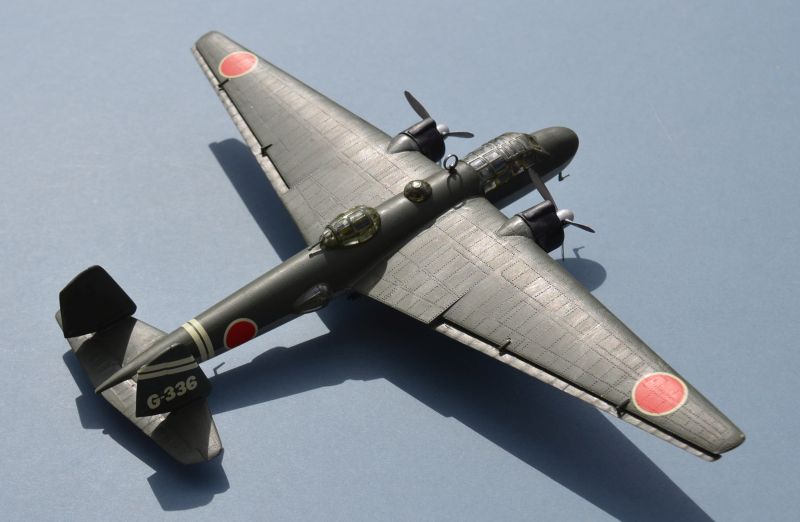
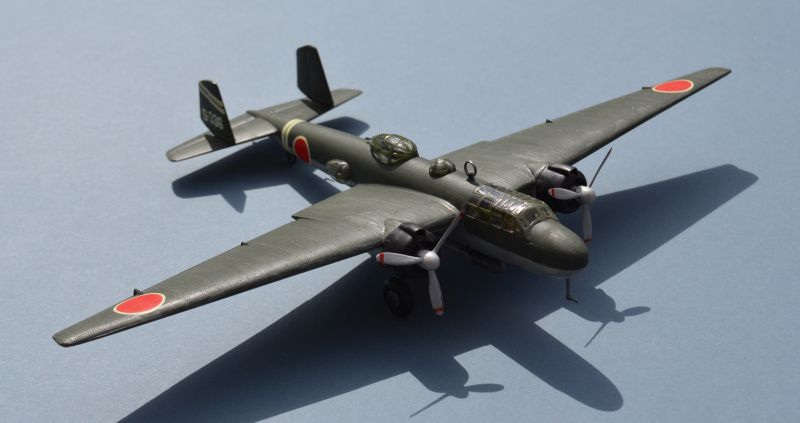
Kawasaki Ki48-
90th Army Aviation Regiment, Imperial Japanese Army
Hebei Air Base, Chine, 1943-
Hasegawa (ex-
The Ki-
In normal Japanese style, the Ki-
The Ki-
Kamikaze Ki-
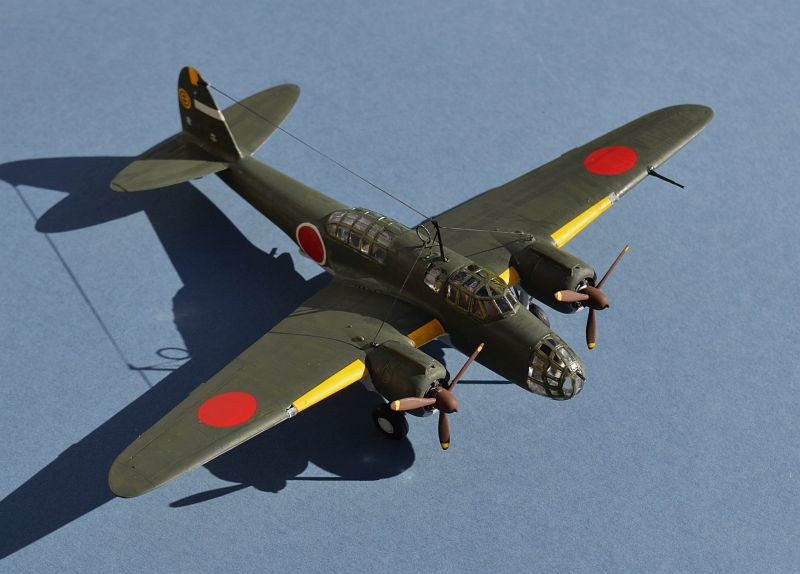
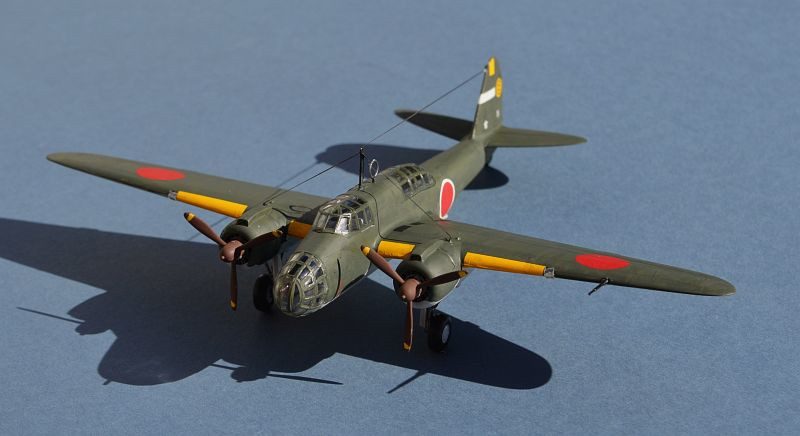
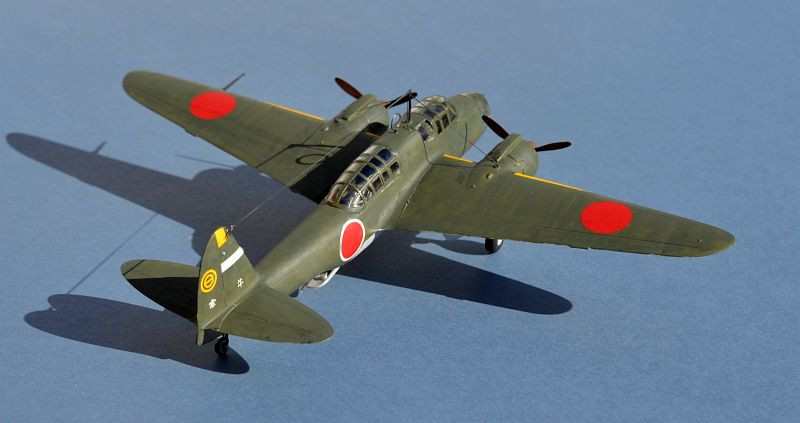
Mitsubishi J2M3 Raiden (lightning Bolt)
302nd Kokutai, Imperial Japanese Navy, Atsugi Naval Air base, 1945
Hasegawa (out the box) link to build page
Development of the J2M Raiden (Thunderbolt) began in the late 1930s. In a departure from previous IJN philosophy of range and manoeuvrability, the Raiden specification emphasised speed, rate of climb and firepower, even allowing for some armour plating. To improve aerodynamics, the engine was mounted relatively far back, with an extended shaft and cowling allowing a thinner nose profile with an engine cooling fan within the cowling.
Difficulties with the engine and the undercarriage, as well as competing priorities
for the Zero fighter meant that the J2M did not enter service until 1943 and even
then in limited numbers. These delays, disappointment with under-
Aircraft of the elite 302nd Air Group at Atsugi Air Base had notable success against allied bombers (300 official kills), whose track toward the main industrial centres of Yokohama and Tokyo passed close to Atsugi. The proximity of the manufacturer's factory also helped with technical and logistic issues.
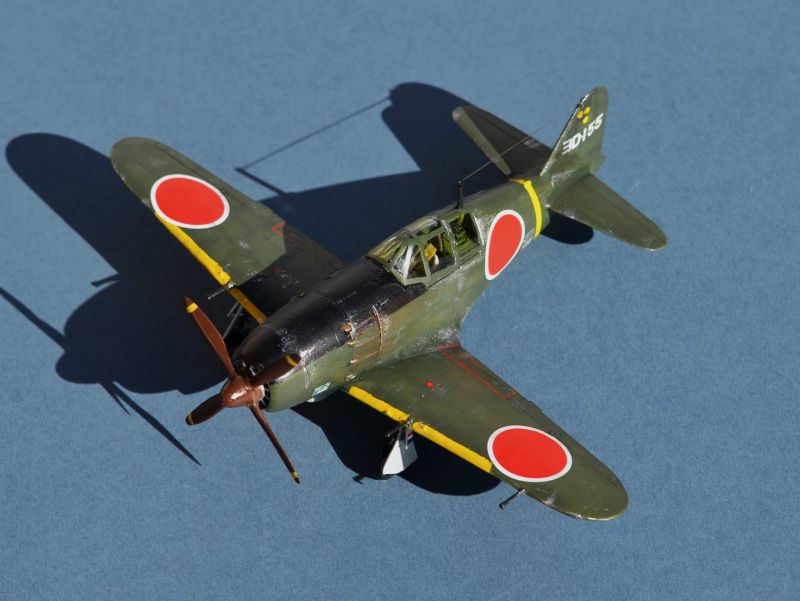
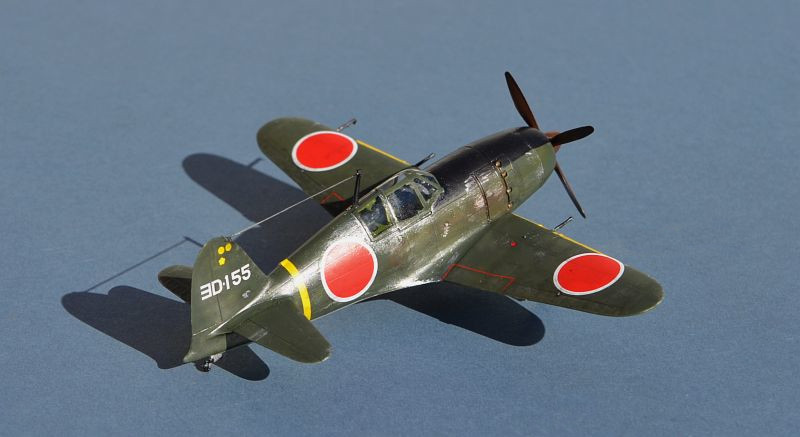
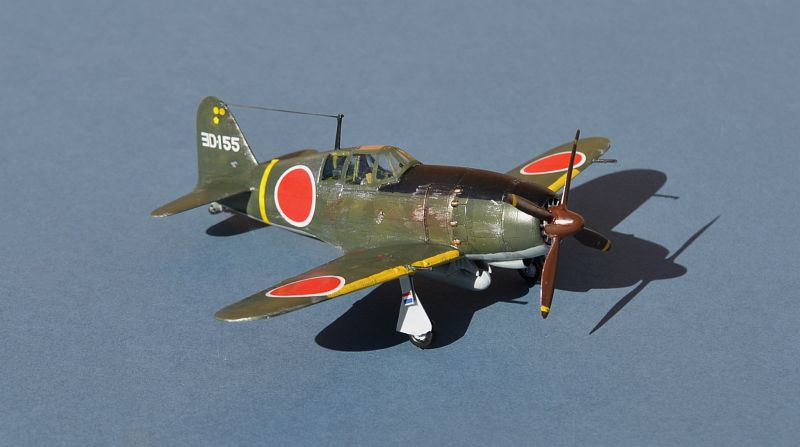
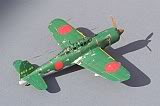
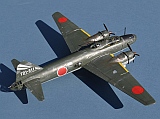
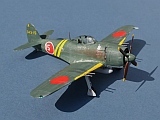
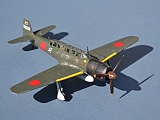
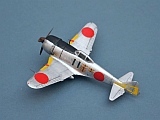
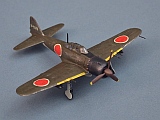
Click on the icon or scroll down to see the models
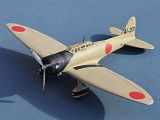
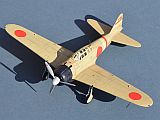
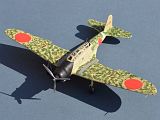
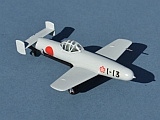
www.gengriz.co.uk
